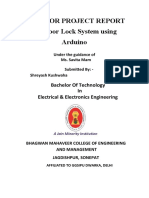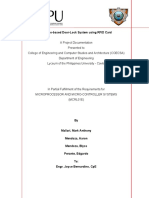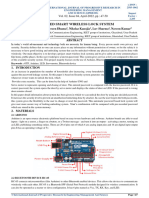0% found this document useful (0 votes)
91 views2 pagesSmart Door Locking Using Arduino
The document outlines the methodology for creating a smart door locking system using Arduino, including system design, component selection, hardware integration, software development, testing, and deployment. It also discusses limitations such as security vulnerabilities, power dependency, durability issues, limited features, weather sensitivity, and potential authentication failures. Overall, it provides a comprehensive guide for building and implementing a smart locking mechanism.
Uploaded by
ademasfaw222Copyright
© © All Rights Reserved
We take content rights seriously. If you suspect this is your content, claim it here.
Available Formats
Download as DOCX, PDF, TXT or read online on Scribd
0% found this document useful (0 votes)
91 views2 pagesSmart Door Locking Using Arduino
The document outlines the methodology for creating a smart door locking system using Arduino, including system design, component selection, hardware integration, software development, testing, and deployment. It also discusses limitations such as security vulnerabilities, power dependency, durability issues, limited features, weather sensitivity, and potential authentication failures. Overall, it provides a comprehensive guide for building and implementing a smart locking mechanism.
Uploaded by
ademasfaw222Copyright
© © All Rights Reserved
We take content rights seriously. If you suspect this is your content, claim it here.
Available Formats
Download as DOCX, PDF, TXT or read online on Scribd
/ 2




















































































